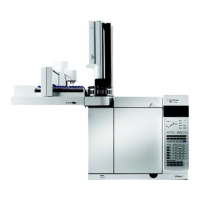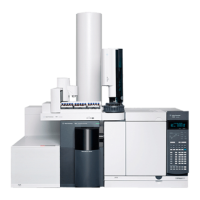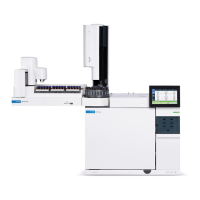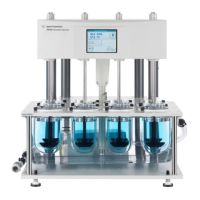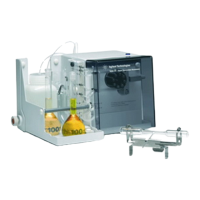Columns and Oven 4
Advanced Operation Manual 159
Backflushing a Column
Backflush is a means of discarding high- boilers from a
column after the peaks of interest have eluted. It saves
analysis time and has these additional benefits:
• Longer column life
• less high temperature exposure
• removal of high- boilers
• protection from air and water at high temperatures
• Less chemical background
• ghost peaks
• “wrap- around” of late eluters from previous runs
• stationary phase decomposition peaks
• Less contamination of the mass selective detector (MSD)
source, if using MSD
• longer time between source cleanings
• higher stability of calibrations
Agilent now provides two Backflush Wizard software
utilities. One is available with the Instrument Utilities
software, and the other is an add- on for your Agilent data
systems. These utilities complement each other, and
automate the process of updating the GC and method to
implement and validate successful backflushing. Contact your
Agilent sales representative for more information
If not using an Agilent Backflush Wizard, you will need to
experimentally determine the correct flow/pressure settings
and the backflush time appropriate for your analysis.
Determine the correct values by testing the backflush
method, then running a blank to check for residual late
eluters.
Refer to the Agilent web site at http://www.agilent.com/chem
for example backflush applications, especially if using an
MSD.
Only backflush an inlet that has a split vent line with a chemical trap,
such as the split/splitless, PTV, and VI. Attempts to backflush using
other inlet types will most likely damage the pneumatics flow
modules.

